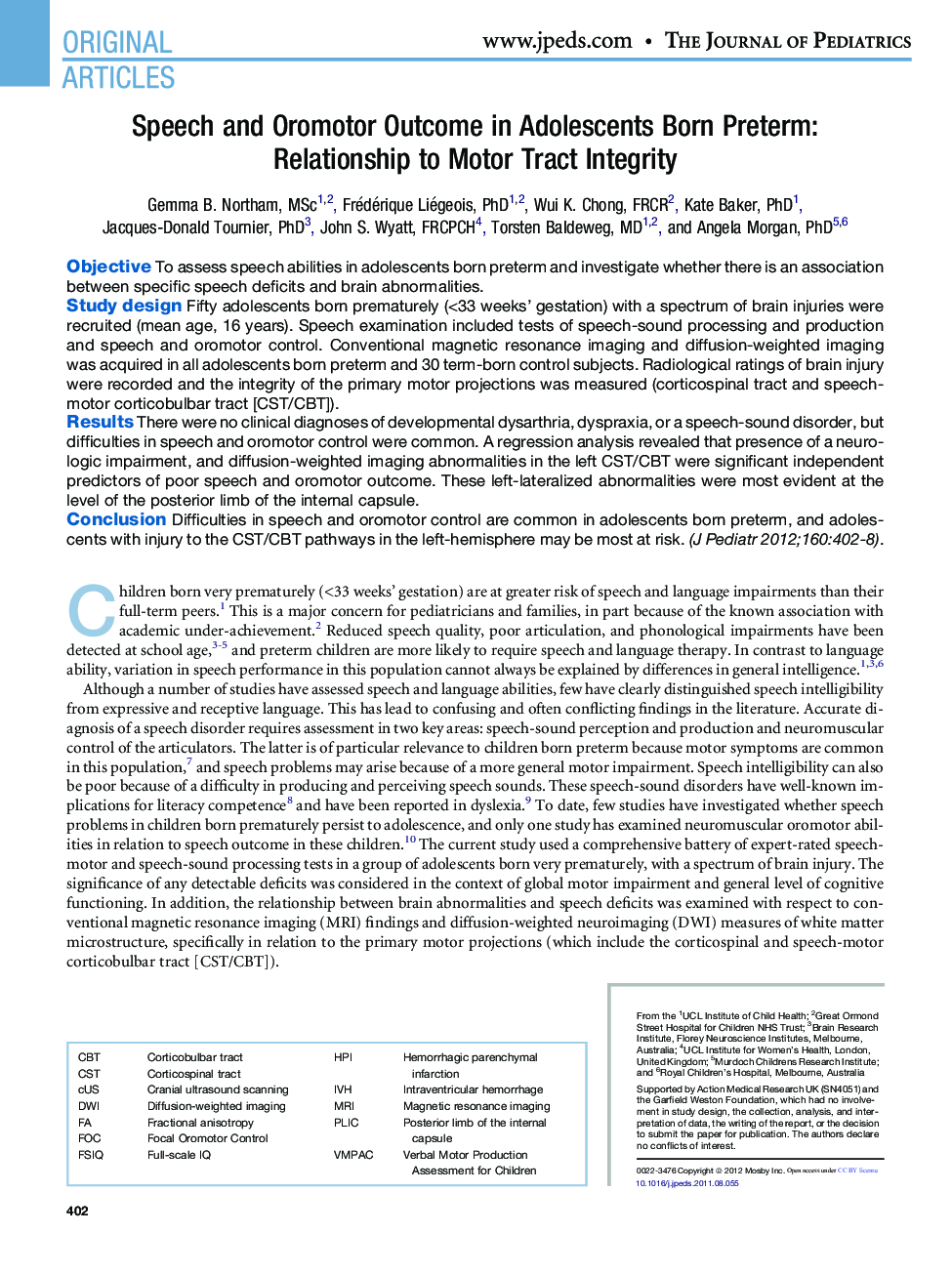| Article ID | Journal | Published Year | Pages | File Type |
|---|---|---|---|---|
| 6225278 | The Journal of Pediatrics | 2012 | 8 Pages |
ObjectiveTo assess speech abilities in adolescents born preterm and investigate whether there is an association between specific speech deficits and brain abnormalities.Study designFifty adolescents born prematurely (<33 weeks' gestation) with a spectrum of brain injuries were recruited (mean age, 16 years). Speech examination included tests of speech-sound processing and production and speech and oromotor control. Conventional magnetic resonance imaging and diffusion-weighted imaging was acquired in all adolescents born preterm and 30 term-born control subjects. Radiological ratings of brain injury were recorded and the integrity of the primary motor projections was measured (corticospinal tract and speech-motor corticobulbar tract [CST/CBT]).ResultsThere were no clinical diagnoses of developmental dysarthria, dyspraxia, or a speech-sound disorder, but difficulties in speech and oromotor control were common. A regression analysis revealed that presence of a neurologic impairment, and diffusion-weighted imaging abnormalities in the left CST/CBT were significant independent predictors of poor speech and oromotor outcome. These left-lateralized abnormalities were most evident at the level of the posterior limb of the internal capsule.ConclusionDifficulties in speech and oromotor control are common in adolescents born preterm, and adolescents with injury to the CST/CBT pathways in the left-hemisphere may be most at risk.
